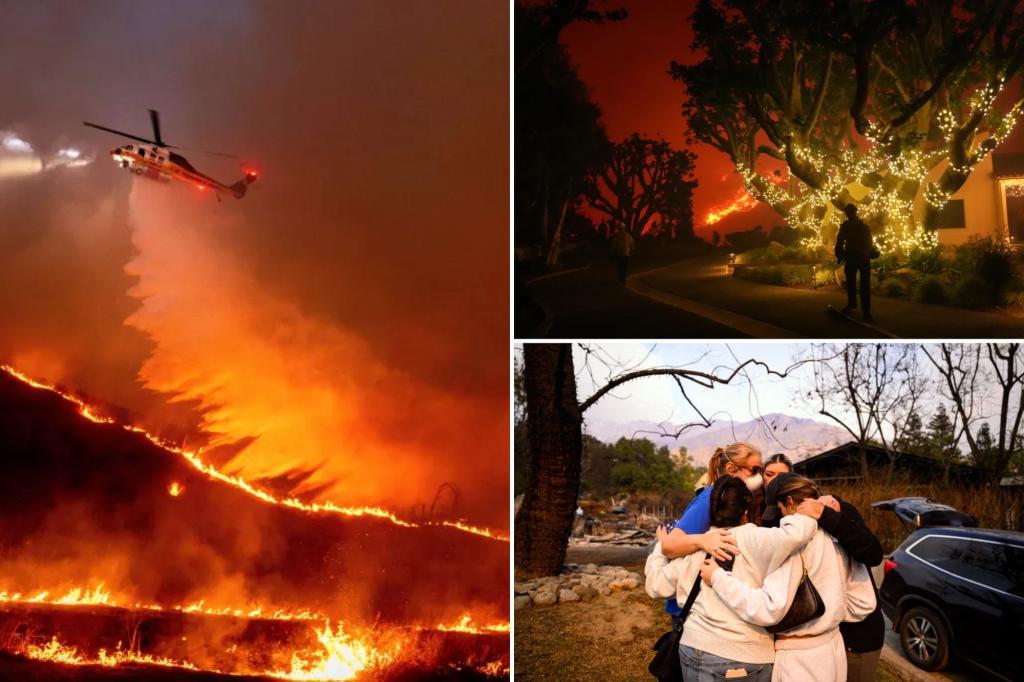The devastating wildfires raging across the Los Angeles area, claiming lives, homes, and businesses, have ignited a crucial investigation into their origins. Authorities are meticulously examining a range of potential ignition sources, attempting to pinpoint the spark that ignited these infernos. In the upscale community of Pacific Palisades, where the firestorm has left a trail of destruction, investigators have zeroed in on an area behind a residence situated above a densely vegetated arroyo. While the exact cause remains undetermined, understanding the potential triggers is paramount to preventing future tragedies.
While lightning strikes are statistically the leading cause of wildfires nationwide, this possibility was swiftly ruled out in both the Palisades and Eaton fires due to the absence of reported lightning activity in the affected regions. This shifts the focus to other common culprits: intentional acts of arson and malfunctions within utility lines. These two factors represent significant avenues of investigation, and while no definitive conclusions have been reached, investigators are actively pursuing all leads to determine if either played a role in igniting the blazes. The magnitude of these fires underscores the importance of uncovering their origins and implementing preventive measures against future occurrences.
Expert fire investigators, drawing upon experience with large-scale blazes like the Oakland Hills fire, emphasize that the initial stages of a fire, regardless of its eventual size, hold the key to determining its cause. The investigative process involves meticulous examination of the point of origin, searching for clues within the immediate vicinity to identify the source of ignition. While the sheer scope of the destruction can be overwhelming, the fundamental principles of fire investigation remain the same: identify the origin, analyze the surrounding area, and determine the cause. This methodical approach is crucial to understanding how these fires began and implementing measures to mitigate future risks.
Utility companies operating in California are mandated to report any electrical incidents that could potentially be linked to wildfires. This crucial reporting requirement allows the California Public Utilities Commission (CPUC) to launch investigations into potential violations of state regulations concerning fire safety and utility infrastructure. The 2017 Thomas Fire, a stark reminder of the devastating consequences of utility-related fires, serves as a precedent. Investigators determined that the Thomas Fire, which scorched vast swaths of land and resulted in fatalities, was sparked by contact between Southern California Edison power lines during periods of high winds. The current investigation will meticulously examine any similar scenarios that might have contributed to the recent outbreaks.
Although lightning strikes, arson, and utility malfunctions represent the most frequent causes of wildfires, other potential ignition sources warrant consideration. Debris burning, fireworks, and a multitude of accidental scenarios can inadvertently spark devastating blazes. A tragic example of this occurred in 2021, when a gender reveal pyrotechnic display ignited a massive wildfire, consuming homes, buildings, and tragically claiming the life of a firefighter. This incident underscores the critical need for responsible fire safety practices and the potential for seemingly innocuous activities to escalate into catastrophic events.
As the Eaton and Palisades fires continue to burn, fueled by dry conditions and challenging terrain, containment efforts are hampered by the relentless nature of the flames. Unless substantial precipitation occurs or the fire naturally exhausts its fuel supply, fully extinguishing these infernos remains a daunting task. The current focus remains on containing the spread and protecting lives and property, while investigators continue their meticulous work to determine the root cause of these devastating wildfires. The lessons learned from these tragic events will be crucial in shaping future fire prevention strategies and safeguarding communities from similar disasters.

